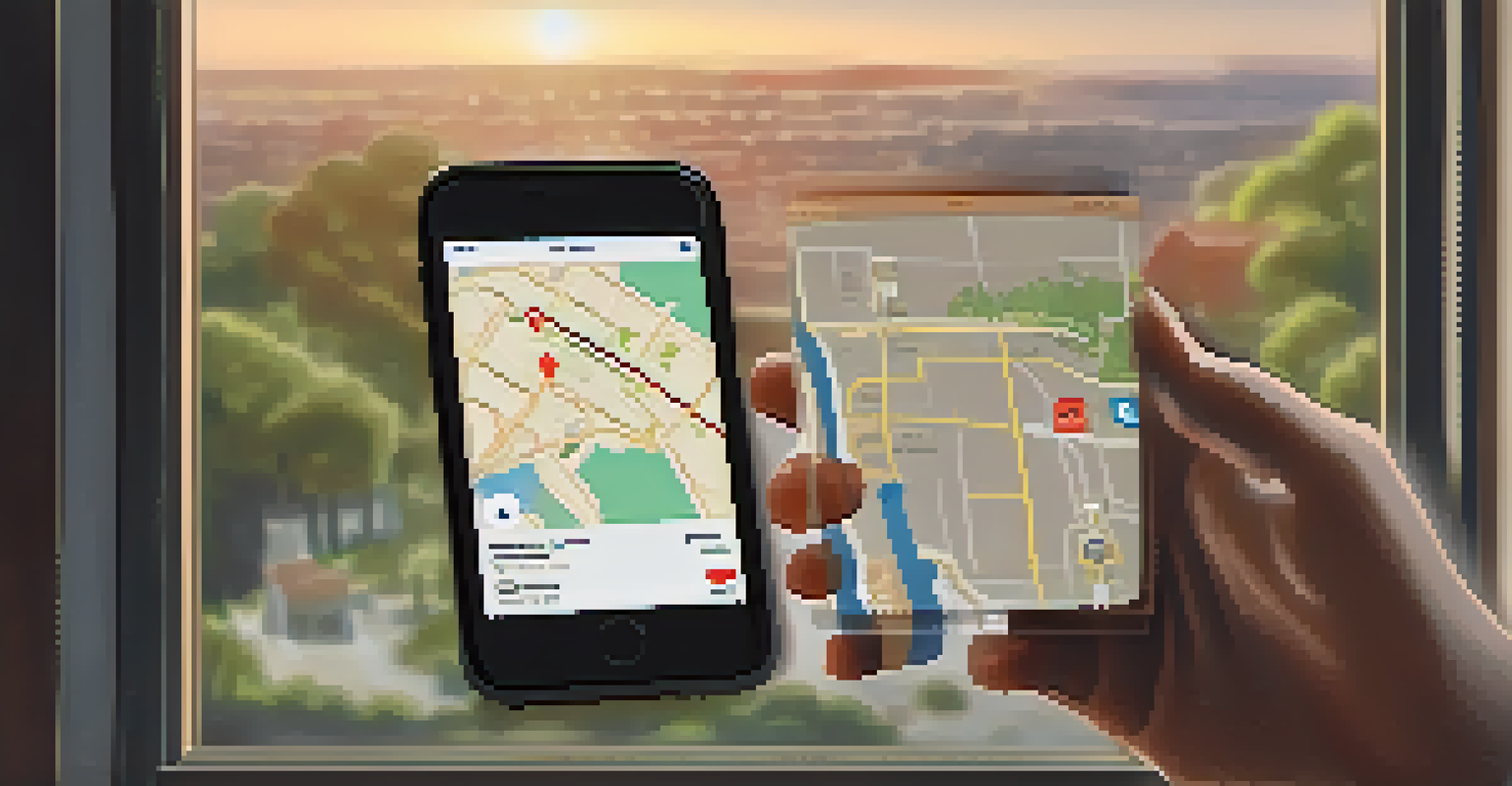Situational Awareness: Key to Staying Safe at Night

Understanding Situational Awareness for Safety
Situational awareness is all about being aware of your surroundings and understanding how they might impact your safety. Imagine walking through a park at night; it’s crucial to notice who is around you and what they are doing. This awareness helps you identify potential threats before they become dangerous situations.
Awareness is the greatest agent for change.
Being aware isn’t just about seeing; it’s about interpreting cues, like body language, environmental changes, or even sounds. For example, if you hear footsteps behind you, assessing the situation can help you determine whether to keep walking or find a safer route. This skill can significantly reduce risks and enhance your sense of security at night.
In essence, situational awareness is your first line of defense against unexpected dangers. By training yourself to observe and assess your environment, you can make informed decisions that keep you safe and secure. It's like having a mental map that guides you through potentially risky situations.
The Importance of Nighttime Awareness
At night, our visibility decreases, and so does our ability to perceive potential threats. This makes situational awareness even more critical as shadows can obscure dangers and unfamiliar areas can feel intimidating. Being alert allows you to navigate these challenges more effectively.

Consider walking home late after a night out. The streets may be quieter, but that doesn’t mean they are safer. By being aware of your surroundings—like the positions of streetlights, parked cars, and other pedestrians—you can avoid risky areas and remain vigilant against possible threats.
Situational Awareness Enhances Safety
Being aware of your surroundings and interpreting cues can help you identify potential threats and make informed decisions.
Moreover, nighttime awareness isn’t just for your safety; it also sets a positive example for those around you. When we practice being aware, we contribute to a culture of safety and vigilance that can help everyone feel more secure. After all, safety is often a community effort.
Practicing Situational Awareness at Night
Practicing situational awareness is like building a muscle; the more you do it, the stronger it becomes. Start by intentionally observing your environment when you are out at night. Notice the details—the people around you, the layout of the area, and any unusual occurrences. This habit can heighten your alertness and preparedness.
The best way to predict the future is to create it.
Another effective way to enhance your awareness is to limit distractions. For instance, while listening to music or scrolling through your phone might seem harmless, it can significantly reduce your ability to notice what's happening around you. By staying focused, you can better assess any potential risks and respond accordingly.
Additionally, practicing mindfulness can boost your situational awareness. Techniques like deep breathing or grounding exercises can help you remain calm and focused, making it easier to process your surroundings. Remember, situational awareness is not just about seeing; it’s about understanding and responding to your environment.
Utilizing Technology for Enhanced Safety
In our tech-driven world, a variety of tools can help enhance your situational awareness at night. Smartphone apps that provide real-time crime mapping or safety notifications can keep you informed about local incidents. Leveraging technology can make you feel more secure when navigating unfamiliar areas after dark.
Moreover, GPS and navigation apps often include features that highlight safer routes, avoiding poorly lit or less populated streets. For instance, using a navigation app to find a well-lit path home can reduce anxiety and increase your overall safety. Just be sure to stay alert and not rely solely on your device.
Trust Your Instincts for Protection
Listening to your intuition can alert you to dangers and empower you to take necessary precautions in risky situations.
Additionally, consider using personal safety apps that allow you to share your location with trusted friends or family. This feature can provide peace of mind, knowing that someone is aware of your whereabouts. With technology at your fingertips, you can enhance your safety while still being vigilant.
Trusting Your Instincts: A Key Component
One of the most powerful tools in your safety arsenal is your intuition. Your gut feelings can often alert you to potential dangers before your mind has fully processed them. If something feels off while you're out at night, don’t ignore that feeling; it’s your body’s way of signaling that you need to be cautious.
For example, if you notice someone following you or feel uncomfortable in a situation, trust your instincts and take action. This might mean crossing the street, entering a store, or calling a friend. Remember, it’s better to be safe than sorry, and your instincts are often your first line of defense.
By learning to value and listen to your instincts, you build confidence in your ability to stay safe. This self-trust can be empowering, allowing you to navigate nighttime environments with greater assurance. In essence, your intuition is an invaluable part of situational awareness.
Building a Safety Mindset
Creating a safety mindset involves more than just awareness; it’s about adopting a proactive approach to your well-being. This means being prepared for various situations, from having a safety plan to knowing whom to contact in case of an emergency. A little preparation can go a long way in ensuring your safety at night.
For instance, familiarize yourself with your surroundings when visiting a new area. Knowing the locations of nearby businesses, police stations, or well-lit streets can help you feel more at ease. This knowledge not only enhances your situational awareness but also equips you with options should you need them.
Community Support Increases Security
Engaging with your community fosters a culture of safety, where collective vigilance enhances everyone's sense of security.
Additionally, consider joining community safety programs or workshops that focus on self-defense or safety awareness. Engaging in these activities can broaden your understanding of personal safety and encourage a culture of vigilance in your community. By cultivating a safety mindset, you empower yourself and those around you.
The Role of Community in Safety
Community plays a vital role in enhancing situational awareness and safety at night. When individuals look out for each other, it creates an environment where everyone feels more secure. Simple actions, like walking in groups or checking in with neighbors, can significantly improve the overall safety of your community.
Moreover, participating in community watch programs can foster a sense of camaraderie and shared responsibility. These groups often keep an eye on local happenings and can help deter criminal activity simply by being present. When people know that others are watching out for them, it promotes an atmosphere of safety.

Finally, engaging with local law enforcement can strengthen community ties and awareness. Attending neighborhood meetings or safety workshops can provide valuable information and resources. By coming together as a community, we can enhance our situational awareness and ensure that everyone feels safe at night.